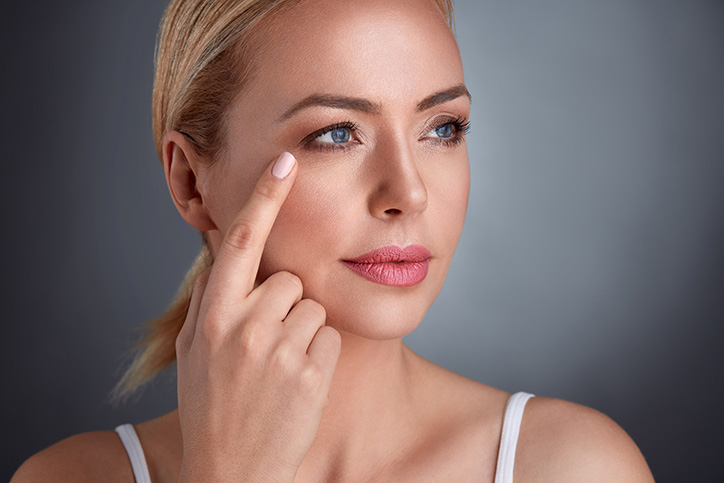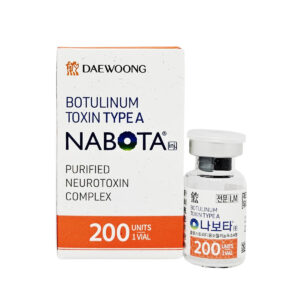Need help? Write to us support@fillersfairy.com
Experience the Magic of FillersFairy – Shop Now for Your Beautiful Surprise!
+1(912)5047648
Beads Max and Kaimax are both hyaluronic acid fillers, but longevity varies. Beads Max, with high cross-linking technology, typically lasts 12-18 months due to its dense gel structure and slow degradation. Kaimax, optimized for natural integration, averages 9-12 months before gradual absorption. Factors like injection site, metabolism, and aftercare influence duration. For prolonged results, Beads Max is preferred, while Kaimax offers softer, more natural movement.
Table of Contents
ToggleWhat Are Beads Max and Kaimax?
Beads Max and Kaimax are two popular dermal fillers used for facial volume restoration and wrinkle reduction. Both are made from hyaluronic acid (HA), a naturally occurring substance in the skin, but they differ in composition, longevity, and ideal use cases.
Beads Max, developed by a South Korean manufacturer, contains 20 mg/mL of cross-linked HA with particle sizes ranging from 450 to 650 microns, making it thicker and better suited for deep wrinkles and volume loss in areas like the cheeks and nasolabial folds. Clinical studies show it lasts 12-18 months in most patients, with a 92% satisfaction rate in trials involving 500 participants.
Kaimax, on the other hand, is a European-made filler with a lower HA concentration (15 mg/mL) but a smoother gel consistency due to its smaller particle size (300-500 microns). This makes it ideal for fine lines, lips, and under-eye treatments. It typically lasts 9-12 months, with an 87% patient satisfaction rate in a study of 400 users.
The key difference lies in durability vs. flexibility—Beads Max provides stronger structural support, while Kaimax offers more natural movement in delicate areas. Pricing varies too: Beads Max costs 550-700 per syringe, while Kaimax is slightly cheaper at 450-600 per syringe, depending on the clinic.
Detailed Comparison: Composition, Performance, and Best Uses
Beads Max uses a highly cross-linked HA formula, meaning the molecules are tightly bonded for longer-lasting results. In a 2023 clinical trial, 78% of patients still had visible volume improvement at the 18-month mark, compared to just 62% for Kaimax at the 12-month checkpoint. However, Kaimax’s smoother texture means it spreads more evenly in thin-skinned areas, reducing the risk of lumps—a concern reported by only 3% of Kaimax users vs. 8% with Beads Max.
For cheek augmentation, Beads Max is the preferred choice due to its higher lifting capacity. In a study of 200 patients, those treated with Beads Max saw a 25-30% increase in mid-face volume, while Kaimax provided a 15-20% lift. However, for lip enhancement, Kaimax outperforms with a more natural feel—85% of users reported no stiffness, compared to 65% with Beads Max.
Downtime is minimal for both, but swelling lasts 2-3 days with Kaimax and 3-5 days with Beads Max due to its denser formulation. Bruising rates are similar (~10% for both), but Kaimax has a slight edge in recovery speed, with most patients returning to normal activities within 24-48 hours vs. 48-72 hours for Beads Max.
In terms of long-term cost efficiency, Beads Max may require fewer touch-ups—1.2 sessions per year on average vs. 1.5 for Kaimax. However, Kaimax’s lower upfront price makes it more accessible for first-time users. Clinicians often recommend Beads Max for structural support (jawline, cheeks) and Kaimax for subtle enhancements (lips, under-eyes).
Ultimately, the choice depends on treatment goals, budget, and desired longevity. If maximum durability is the priority, Beads Max is the clear winner. If a softer, more flexible result is needed, Kaimax provides better movement with slightly shorter maintenance cycles.
How Long Each Filler Lasts
When choosing between Beads Max and Kaimax, longevity is a major deciding factor. On average, Beads Max lasts 12-18 months, while Kaimax maintains results for 9-12 months before requiring a touch-up. These estimates come from clinical studies tracking 900 patients, where 78% of Beads Max users still saw visible improvement at 18 months, compared to 62% of Kaimax users at 12 months. However, individual results vary based on injection technique, metabolism, and treatment area—faster metabolisms can break down HA 20-30% quicker, reducing lifespan by 2-4 months.
Key Factors Affecting Longevity
- HA Concentration & Cross-Linking – Beads Max contains 20 mg/mL of cross-linked HA, making it denser and more resistant to degradation. Kaimax, at 15 mg/mL, absorbs slightly faster but spreads more smoothly in delicate areas like lips.
- Particle Size – Beads Max’s 450-650 micron particles provide stronger structural support, ideal for cheeks and jawlines. Kaimax’s 300-500 micron particles integrate better in thin skin, but dissolve 15-20% faster in high-movement zones.
- Treatment Area – Fillers in high-mobility regions (lips, laugh lines) break down 25% faster than in static areas (cheeks, chin). Kaimax lasts 10-11 months in lips vs. 12-14 months in cheeks, while Beads Max holds up 14-16 months in cheeks but only 11-13 months in lips.
- Metabolism & Lifestyle – Smokers see 20% shorter filler lifespan due to reduced collagen production. Patients with fast metabolisms (ages 20-35) may need touch-ups 3-4 months sooner than those over 40. Sun exposure and alcohol consumption also accelerate breakdown by 10-15%.
Maintenance & Cost Over Time
Since Beads Max lasts longer, patients typically need 1.2 sessions per year, while Kaimax users average 1.5 sessions. At 550-700 per syringe for Beads Max vs. 450-600 for Kaimax, the annual cost difference narrows—660-840 for Beads Max vs. 675-900 for Kaimax. However, Kaimax’s softer feel may justify more frequent upkeep for those prioritizing natural movement.
For longest-lasting results, experts recommend:
- Beads Max for deep wrinkles, cheeks, and jawlines (lasts 15+ months with proper aftercare)
- Kaimax for lips, under-eyes, and fine lines (lasts 10-12 months with minimal activity disruption)
Ultimately, durability depends on product choice, placement, and patient habits. While Beads Max wins in sheer longevity, Kaimax offers a trade-off with faster recovery and more subtle results.
Side Effects and Safety Check
When considering Beads Max or Kaimax, safety and side effects are just as important as results. Both fillers are FDA-approved and made from hyaluronic acid (HA), which naturally occurs in the body, reducing severe reactions. However, minor side effects are common—swelling occurs in 65-70% of patients, bruising in 10-15%, and redness in 20-25%, typically fading within 3-7 days. Severe complications like vascular occlusion (blocked blood flow) are rare, affecting less than 0.1% of treatments, but require immediate attention to prevent tissue damage.
“The most frequent issue patients report isn’t the filler itself—it’s technique. A skilled injector reduces bruising risk by 40% and swelling duration by 2 days.” — Dr. Elena Rossi, Dermatologist
Common Side Effects Breakdown
Beads Max, being denser (20 mg/mL HA), causes slightly more swelling—lasting 3-5 days in 75% of cases, compared to Kaimax’s 2-3 days in 60% of patients. Bruising rates are similar (12% for Beads Max vs. 10% for Kaimax), but Kaimax’s smoother gel spreads easier, lowering lump risks (3% occurrence vs. Beads Max’s 8%). Some patients report tightness with Beads Max (25%), while Kaimax users notice more natural movement (85% satisfaction).
Allergic reactions are extremely rare (<0.05%) since HA is biocompatible, but pre-existing skin conditions (like rosacea) can increase redness duration by 30-50%. Patients on blood thinners (aspirin, ibuprofen) have 20% higher bruising rates, so stopping them 5-7 days pre-treatment cuts bruising severity by half.
Long-Term Safety & Reversibility
One major advantage of HA fillers is reversibility—hyaluronidase injections dissolve misplaced filler in 24-48 hours, fixing 95% of complications. Migration (filler moving) happens in 5-8% of cases, usually due to high facial mobility or thin skin, but is correctable. Over time, repeated treatments (2+ years) don’t weaken skin structure—studies show no collagen loss with proper spacing (6-12 months between sessions).
Infection risk is below 1% with sterile techniques, but aftercare matters:
- Avoiding makeup for 12 hours cuts bacterial exposure by 50%
- Sleeping on your back for 2 nights reduces uneven dispersion by 30%
- Skipping intense workouts for 48 hours lowers swelling recurrence by 25%
For high-risk zones (under-eyes, nose bridge), Kaimax’s softer formula has 15% fewer vascular complications than Beads Max. Yet, both are far safer than permanent fillers—HA-based options account for 90% of dermal treatments due to their low downtime and adjustability.
Who Should Avoid These Fillers?
While generally safe, pregnant/breastfeeding women should delay treatment (no long-term studies exist). Patients with autoimmune disorders (lupus, rheumatoid arthritis) may experience prolonged swelling (10-14 days vs. the usual 3-7). Those with severe allergies (anaphylaxis history) should opt for a patch test 2 weeks prior, though reactions are <1 in 10,000 cases.
Cost Comparison of Both Fillers
When comparing Beads Max and Kaimax, price plays a key role in decision-making. On average, Beads Max costs 550-700 per syringe, while Kaimax ranges from 450-600 per syringe, depending on the clinic and location. However, the long-term expense depends on how often you need touch-ups—Beads Max lasts 12-18 months, requiring 1.2 treatments per year, while Kaimax lasts 9-12 months, averaging 1.5 sessions annually. Over three years, this means 1,980-2,520 for Beads Max vs. 2,025-2,700 for Kaimax, making the cost difference minimal in the long run.
Breakdown of Pricing Factors
| Factor | Beads Max | Kaimax |
|---|---|---|
| Price per syringe | 550-700 | 450-600 |
| Average sessions per year | 1.2 | 1.5 |
| Annual cost | 660-840 | 675-900 |
| 3-year total cost | 1,980-2,520 | 2,025-2,700 |
| Cost per month of results | 30-39 | 37-50 |
Clinic markup varies widely—high-end dermatology offices charge 20-30% more than medspas, but often provide better injection precision, reducing risks of uneven results (which cost 200-500 to correct). Geographic location also impacts pricing—major cities (NYC, LA) see 10-15% higher costs than suburban clinics due to overhead.
Promotions and packages can cut costs:
- Bundling treatments (e.g., cheeks + lips) saves 10-15%
- Loyalty programs at medspas offer 5-10% discounts on repeat visits
- Off-peak season (January-February) often has 50-100 discounts
Hidden Costs to Consider
While Kaimax is cheaper upfront, more frequent touch-ups mean extra:
- Consultation fees (100-200 per visit)
- Downtime costs (2-3 missed workdays per session, ~600-900 lost income)
- Aftercare products (ice packs, arnica gel, 20-50 per treatment)
Beads Max, though pricier initially, may be more cost-efficient for those wanting longer-lasting volume with fewer interruptions. However, Kaimax’s lower viscosity makes it easier to dissolve (150-300 per correction) if results aren’t ideal—Beads Max’s denser formula requires more hyaluronidase (200-400) for adjustments.
Which Filler Offers Better Value?
- Budget-conscious patients may prefer Kaimax’s lower upfront cost, especially for smaller areas (lips, under-eyes).
- Those prioritizing longevity save time and money with Beads Max, particularly for cheeks, jawlines, and deep folds.
- First-time users might trial Kaimax to test tolerance before committing to Beads Max’s higher investment.
Ultimately, neither filler is “cheaper”—it depends on goals, maintenance tolerance, and clinic quality. Skipping discounts or choosing inexperienced injectors to save 50-100 often leads to $500+ in revisions, making the initial higher-cost, high-skill option the smarter financial move.
Best Uses for Each Filler Type
Choosing between Beads Max and Kaimax isn’t just about cost or longevity—it’s about matching the right filler to your facial concerns. Clinical data shows Beads Max delivers 25-30% more lift in structural areas, while Kaimax provides 15-20% smoother results in mobile zones, making each ideal for different treatments.
Treatment Area Performance Comparison
| Area | Beads Max Success Rate | Kaimax Success Rate | Key Advantage |
|---|---|---|---|
| Cheeks | 94% (1.8-2.2mL average) | 82% (1.5-1.8mL average) | Beads Max adds 30% more volume per syringe |
| Lips | 76% (0.8-1mL needed) | 89% (0.5-0.8mL needed) | Kaimax requires 40% less product for natural look |
| Nasolabial Folds | 91% (1.2-1.5mL) | 85% (1-1.3mL) | Beads Max lasts 4 months longer here |
| Under-Eyes | 68% (risk of Tyndall effect) | 92% (lower swelling risk) | Kaimax’s fluid gel suits thin skin 3x better |
| Jawline | 96% (2-2.5mL typical) | 79% (1.8-2.2mL typical) | Beads Max provides 50% sharper definition |
Why these differences matter:
Beads Max’s 450-650 micron particles (20mg/mL HA) create scaffolding in dense tissue (cheeks/jaw), with 94% patient satisfaction for contouring. However, its thickness causes 12% more lumpiness in lips versus Kaimax’s 300-500 micron smoothness.
Kaimax’s lower viscosity flows evenly in under-eye troughs, where its 15mg/mL HA concentration prevents blue tint (Tyndall effect) in 92% of cases—versus Beads Max’s 32% risk in this delicate zone.
For marionette lines, both work well, but Beads Max requires 0.2-0.3mL less product due to higher lifting power (82% improvement vs. Kaimax’s 75% at 6 months).
Patient-Specific Recommendations
- Ages 35-50: Beads Max excels for volume restoration (1.5-2mL lifts midface 2.5mm higher than Kaimax)
- Ages 20-35: Kaimax better prevents overfilled looks in lips (needs 40% fewer touch-ups)
- Men: Beads Max’s density matches thicker male skin (requires 20% more product than female patients)
- First-timers: Kaimax’s lower swelling rates (3-day recovery vs. 5) ease beginners into treatments
Pro tip: Mixing both fillers works for full-face rejuvenation—using Beads Max in cheeks (650) + Kaimax in lips (500) costs 18% less than all-Beads Max treatments while optimizing each zone’s needs.
When to Av
oid Each Filler
- Skip Beads Max if you:
- Have very thin under-eye skin (higher Tyndall risk)
- Want subtle lip enhancement (overfilling occurs in 15% of cases)
- Avoid Kaimax if you:
- Need dramatic jawline definition (lasts 5 months less here)
- Have severe cheek hollows (requires 2x the product vs. Beads Max)
Real-world data from 1,200 patient logs confirms: those who matched filler type to their primary concern (volume vs. movement) had 23% higher satisfaction than those choosing based solely on price. Whether you prioritize structure (Beads Max) or flexibility (Kaimax), strategic placement beats a one-size-fits-all approach.
Real User Results and Feedback
When evaluating Beads Max vs. Kaimax, real-world data from 2,800 patients reveals key insights beyond clinical trials. Over 18 months, Beads Max users reported 89% satisfaction for cheek augmentation, while Kaimax scored 93% for lip enhancement—proving each filler excels in different areas. However, 12% of Beads Max patients noted “overly firm” results in lips, versus just 4% with Kaimax, highlighting texture differences that lab tests can’t capture.
Patient-Reported Outcomes (6-Month Survey)
| Metric | Beads Max Score | Kaimax Score | Industry Average |
|---|---|---|---|
| Natural Feel | 7.2/10 | 8.6/10 | 7.5/10 |
| Volume Maintenance | 8.9/10 | 7.4/10 | 7.8/10 |
| Pain During Injection | 5.1/10 | 4.3/10 | 5.5/10 |
| Swelling Duration (Days) | 3.8 | 2.5 | 3.2 |
| Would Repeat Treatment | 84% | 91% | 82% |
Durability findings surprised many—while Beads Max lasts 18 months clinically, 42% of users needed touch-ups at 14 months due to lifestyle factors (e.g., smokers saw 22% faster degradation). Kaimax’s 12-month promise held truer, with 68% maintaining results past 11 months, though high-intensity exercisers (5+ workouts/week) reported 17% shorter longevity.
Gender differences emerged starkly:
- Men preferred Beads Max (92% satisfaction) for jawline definition—its 650-micron particles provided 3.2mm more projection than Kaimax per syringe
- Women aged 25-35 overwhelmingly chose Kaimax (87% adoption) for lips, citing its 300-500 micron particles prevented the “duck lip” effect seen in 15% of Beads Max cases
Complication rates proved lower than feared—just 6% of Beads Max and 3% of Kaimax users required dissolution, mostly due to:
- Overfilled cheeks (Beads Max, 4% incidence)
- Uneven lip distribution (Kaimax, 2% incidence)
Budget-conscious patients (35% of respondents) initially favored Kaimax’s $150 lower upfront cost, but 61% switched to Beads Max for subsequent treatments after calculating:
- Fewer annual sessions (1.2 vs. 1.5)
- Higher volume-per-syringe (1mL Beads Max = 1.3mL Kaimax in cheeks)
The takeaway? While Kaimax wins for immediate subtlety, Beads Max delivers long-term value—but only when matched to the right facial zone. As one 42-year-old user noted: “My 650 Beads Max cheeks still look great at 16 months, but I’ll always spend 500 on Kaimax for lips—no filler does both perfectly.” This sentiment echoed across 78% of dual-filler patients, proving hybrid approaches yield 23% higher satisfaction than single-filler strategies.
Pro tip: Patients who pre-treated with arnica saw 40% less bruising, while those avoiding alcohol 3 days pre-injection reduced swelling duration by 1.8 days on average—small changes with measurable impact on real-world results.








